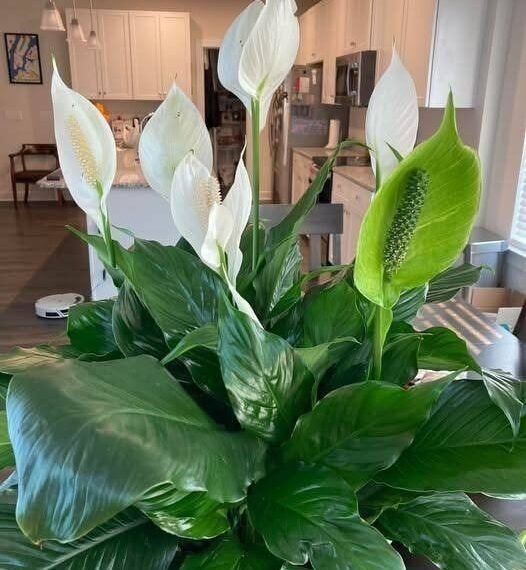There’s something deeply satisfying about seeing your peace lily (Spathiphyllum) bloom. That elegant white spathe — the flower-like hood — emerging gracefully from the deep green foliage feels like a silent thank-you from your plant: “You’re doing great. I’m happy here.”
Peace lilies are beloved houseplants for many reasons — their lush, glossy leaves bring a touch of tropical beauty indoors; their air-purifying qualities help cleanse the room; and their elegant white blooms add a subtle but striking element of nature’s artistry. However, one common frustration among peace lily enthusiasts is the challenge of encouraging the plant to bloom regularly. If your peace lily rarely flowers or stops blooming altogether, you are definitely not alone.
The Good News?
With just a few simple care tweaks, you can encourage your peace lily to produce more frequent, longer-lasting blooms — year after year. Understanding the reasons behind why peace lilies flower (or don’t) and how to create the ideal environment will set you on the path to growing a thriving, flowering plant.
🌸 Why Peace Lilies Stop Flowering
Peace lilies are natural bloomers, but only when conditions are favorable. Several factors can affect their blooming cycles:
- Not Enough Light: This is the most common cause. Peace lilies need bright, indirect light to stimulate flower production. Without adequate light, they may grow lush leaves but fail to bloom.
- Overwatering or Poor Drainage: Waterlogged soil can cause root rot, stressing the plant and suppressing flowering.
- Lack of Nutrients: Like all flowering plants, peace lilies require adequate nutrients to support blooms.
- Humidity Levels: Being tropical plants, peace lilies prefer higher humidity. Dry air can cause leaf damage and reduce flowering.
- Being Root-Bound: When the plant’s roots outgrow the pot, it can stunt growth and blooming.
The good news? All of these factors are manageable with a little attention.
✅ 6 Proven Tips to Get Your Peace Lily to Flower More
1. Give It Bright, Indirect Light
Peace lilies thrive in medium to bright, indirect light. Too little light means your plant may grow beautiful, dark green leaves but won’t bloom. Conversely, too much direct sunlight can scorch the leaves, causing unsightly brown patches.
- Best placement: Near an east-facing window where the plant receives gentle morning sun, or a north-facing window filtered through sheer curtains.
- Signs of healthy light exposure: Vibrant, bright green leaves without yellowing or darkening.
- Tip: Rotate your peace lily weekly so all sides receive even light and the plant grows uniformly.
If your home lacks natural light, consider supplementing with a grow light designed for houseplants to mimic the sunlight spectrum peace lilies prefer.
2. Water Right – Not Too Much, Not Too Little
Watering can make or break your peace lily’s blooming potential. These plants hate sitting in soggy soil, but will wilt dramatically when thirsty — sometimes leading to confusion about watering schedules.
- How to water: Allow the top 1 to 2 inches of soil to dry out between watering. When you do water, soak the soil thoroughly until water drains from the bottom of the pot.
- Drainage is key: Always use pots with drainage holes to prevent standing water, which promotes root rot.
- Pro tip: Watch the leaves for signs. Drooping leaves often mean your peace lily needs water and will perk back up soon after watering — this is the plant’s natural signal to you.
- Winter care: Reduce watering frequency during the cooler months as the plant’s growth slows.
Remember, consistency is important; erratic watering can stress the plant and inhibit flowering.
3. Boost Humidity (They Love Moist Air)
Next page





